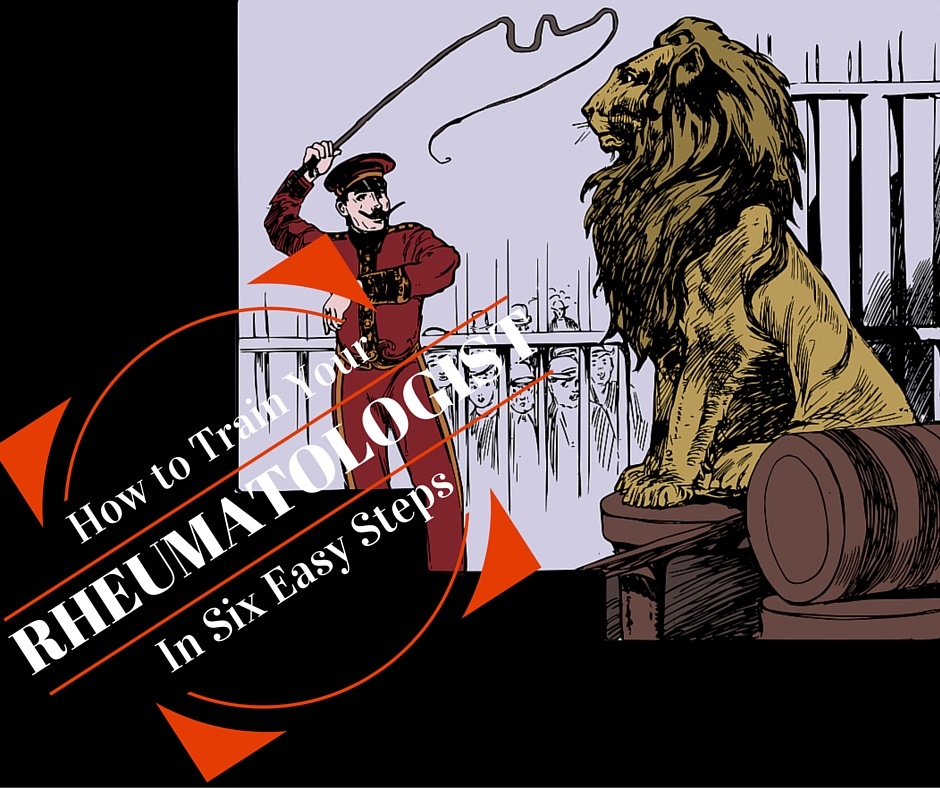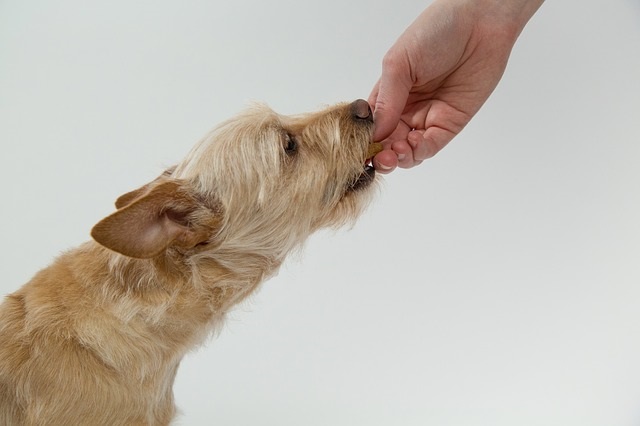Congratulations on getting yourself a brand-new rheumatologist! Rheumatologists — or rheumies, as they are affectionately known in the community — can add so much value to living with any kind of arthritis. Like any other new relationship, though, you have to get used to each other, and your rheumatologist has to come to understand how you approach your life with arthritis.
In other words, you have to train them.
I’d like to share some tips on how to approach the training of your rheumie in a way that can enhance your relationship, and help you build a good life with arthritis
1. Move Slowly
Any formal training starts with a slow introduction. With some, this means letting your trainee sniff your hand in order to assess that you are not a threat. And might be a bit weird if you do this with your rheumie.
Here’s another thing you shouldn’t do the first time you meet your rheumie: show up with a binder full of 47 journal articles about your particular illness, and right away informing them that you will be in charge of the relationship. This will likely be interpreted as a threat and could lead to defensive behaviour, maybe even cause the rheumie to go on the offensive.
Doing your research from home and distilling it into a single page with no more than 3-5 questions is a more non-threatening start to your work together. It is also a subtle way of establishing yourself as the alpha in the relationship.
Alpha patient??
Why not.
2. Come prepared
Always come prepared to any training session. This includes bringing treats to help break the ice.
You may want to consider spending some time before your appointment writing a summary of your medical history and the symptoms that brought you to the appointment. Presenting your rheumie with documents that can save them time in taking your medical history is a great way to establish trust. In addition, just as the list of questions mentioned above, it demonstrates that you are in charge of your life and the situation.
3. Play and Reward
Play can be an excellent way to warm up anyone, and your rheumie is no exception.
Likewise rewarding behaviour that you want to encourage will begin to build the kind of relationship you want. It could be as simple as thanking the rheumie for their approach when they express that the ultimate decision on treatment is yours. This is a building block in developing a team.
Another building block for your relationship is you showing an interest in the rheumie, asking them questions about their treatment approach, background, how they like their work, and so on. This accomplishes two things: creating a two-way relationship, and giving you a sense of how well the two of you might click.
4. Observe body language
Observe the rheumie’s body language throughout your interactions.
This will give you a sense of how they are responding to your training efforts, as well as an indication of their overall personality. If you crack a joke, and their response is a strained smile, perhaps they are not comfortable with humour. If they spend much of the appointment looking at the computer, rather than maintaining eye contact, this may be something that you’ll want to work on in the next training session. Remember that positive reinforcement works better than anything else.
5. Observe yourself
Remember that there are two people in that the situation. There is the rheumie you’re trying to train, and there is you.
Your behaviour, words, and body language is going to elicit responses in your rheumie. You play a large role in whether your rheumie will be startled and defensive, or open and trusting. Remember that this is much like any other interaction, and act like you would with anyone else with whom you’d like to develop a trusting connection
6. Give it time
No one is going to finish training in one session.
Building a relationship takes time, so give yourself and your rheumie at least 3-4 appointments to get a good foundation going. This should be enough to tell you whether you’ll be able to train build the kind of relationship you’re looking for, or whether you may want to start looking for another rheumie.
This post is focused primarily on what you can do to train your rheumatologist, but it’s important to keep in mind that this is a two-way relationship. In effect, you are training each other, adapting to each other’s styles and personalities, creating a unique relationship based in trust and, hopefully, mutual respect and maybe even affection.
Do you have any other tips for training rheumatologist? Please leave them in the comments!









